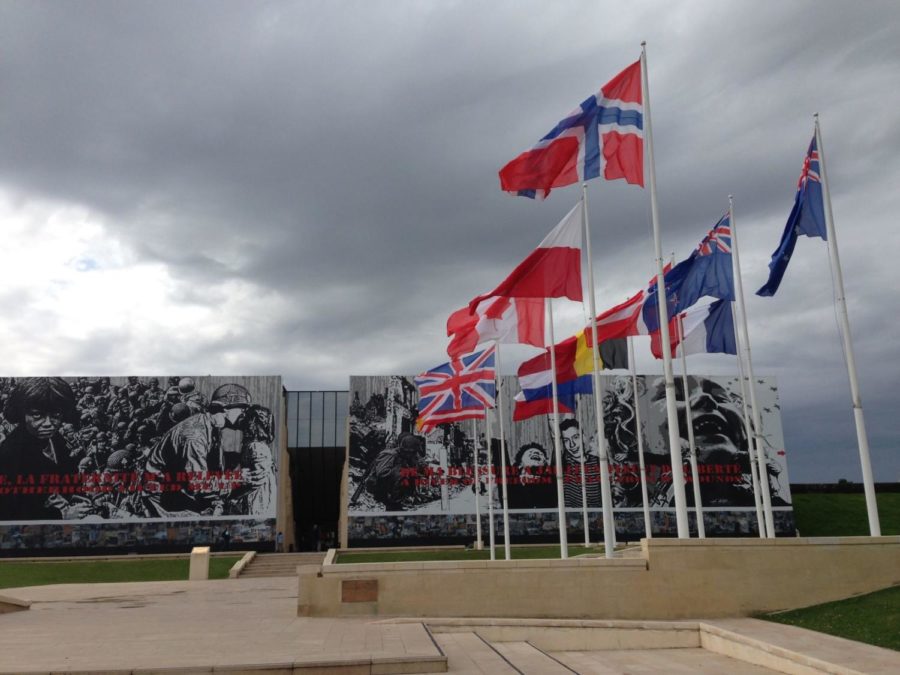Normandy: The D-Day Beaches
June 5, 2017
If you leave the bustling bright lights and crowded city of Paris and take the train a few hours northwest you’ll arrive in Normandy. This seemingly quaint seaside area is truly alive and rich with history and beauty.
The city of Caen is where you’ll arrive, and a very provincial, old-style, village town will greet you. Towering cathedrals lined with stained glass and little cafes are everywhere you turn. The city is set on a series of canals that leak into the ocean so that the fisherman can come and go with their fresh catches. It is an incredible sea-to-table set up. Fish come in early in the morning and only have to travel a mile or less to the surrounding restaurants. Normandy is famous for its mussels, seafood paella and whole fish plates. Normandy also has its name on the map to the equestrian world after hosting the World Equestrian Games in 2014. The gorgeous scenery behind the horses and riders truly made the WEG memorable.
However, Normandy is most famous for the D-Day beaches where France was liberated from German occupation on June 6, 1944. Termed “Operation Neptune,” the allied invasion was also the largest seaborne invasion of its kind. Most people are probably familiar with Omaha Beach from their high school history class, but many people don’t know that there were actually 6 beaches that made up the D-Day invasion. While Omaha Beach houses the piece of art that was given in memorial of those who lost their lives, you can’t leave Normandy without seeing Utah, Pointe du Hoc, Gold, Juno, and Sword Beaches as well.
In downtown Caen there is a beautiful World War II museum that talks about the invasion, the airmen who were on the attack, and artifacts from that day. Overhead there are several German and Allied Force airplanes as well. Most of the tours to the beaches depart from and finish here. While the museum offers some less lengthy tours to the beaches in vans, getting a private tour is worth the time and money. A private driving tour is a great way to learn about the details of the invasion, ask questions, and get to see all of the beaches!
The tour can last anywhere from 2-6 hours depending on how much you want to see. Remember to take into account that the drive itself is stunning and there are bunkers and machine guns still standing just as they were left in the fields overlooking the beaches. These are also a good thing to stop and see because it gives you the perspective of the invasion from the German side.
Currently you can walk freely wherever you want on the beaches, in the battlefields, into the bunkers, etc. You can touch everything and really get up close and personal to the front lines. While the beaches are simply that – beaches – take some time to look at the coast, the scenery, and take in what happened on D-Day. Two parts of the tour are extremely humbling. One is a large stone obelisk that stands watch over Omaha Beach symbolizing a beacon of hope for the Allied Forces.
At the end of the tour you can stop by the Normandy American Cemetery and walk amongst the headstones of the fallen allies. The stones are all simple white crosses etched with names lined for what feels like miles. Some have flowers, wreaths, candles, and other gifts adorning them, and the some have never been visited.
This is the end of your driving tour of the D-Day Beaches and surrounding coast. If you are a history buff or even if you just love seeing beautiful coastline, this trip has something for everyone. Be sure to take at least 2 hours to visit the WWII museum and really see all the stories and history within its walls. At the end of the day be sure and try the delicious seafood Normandy has to offer!






























































































































































